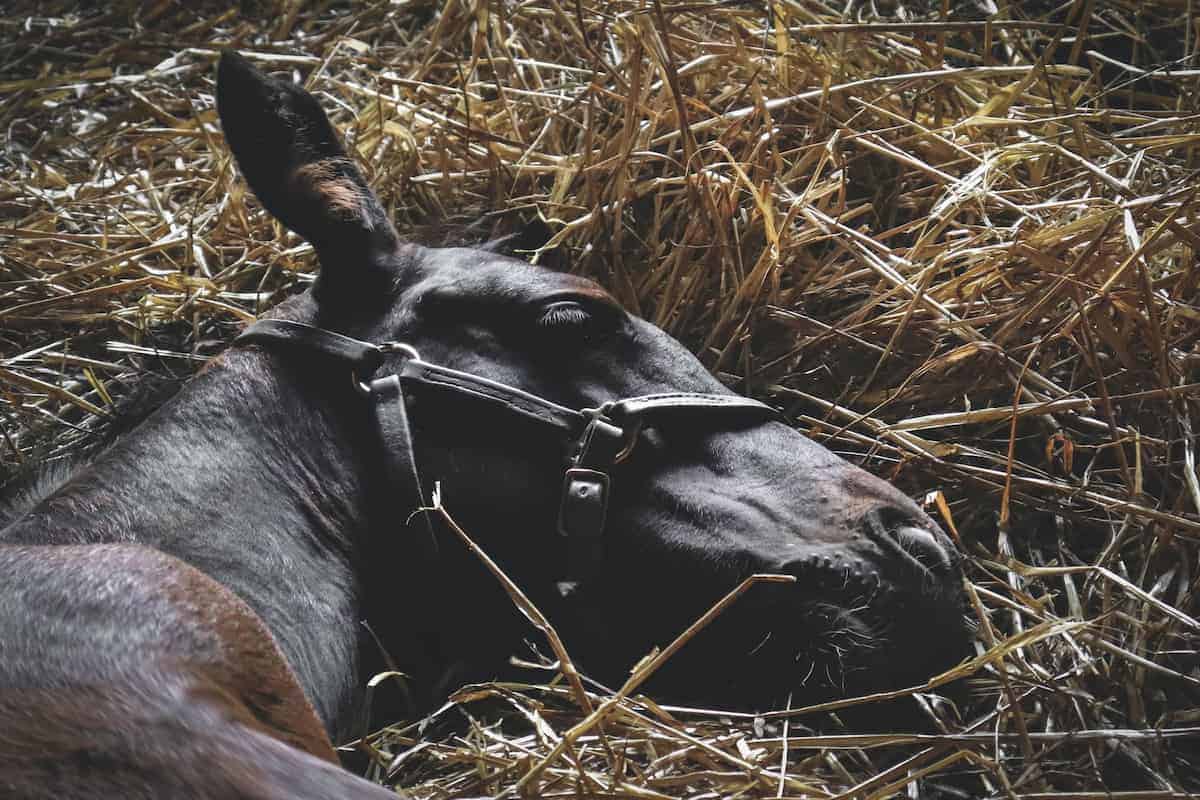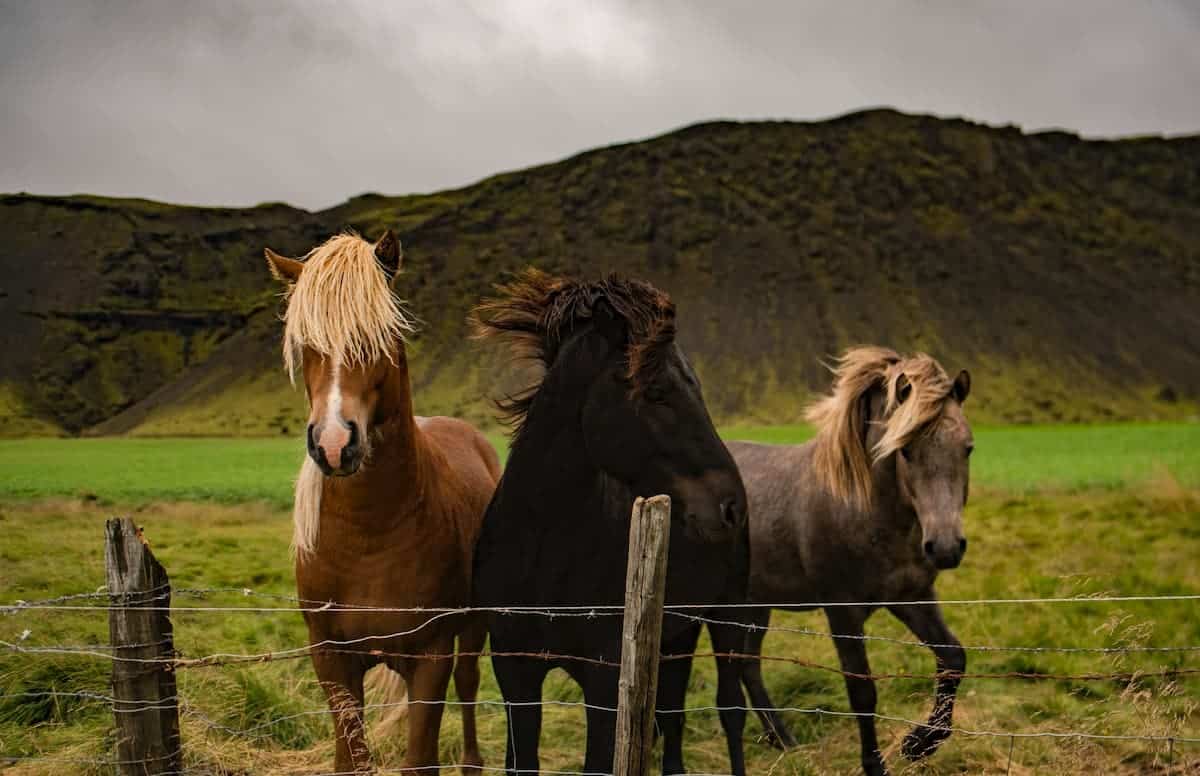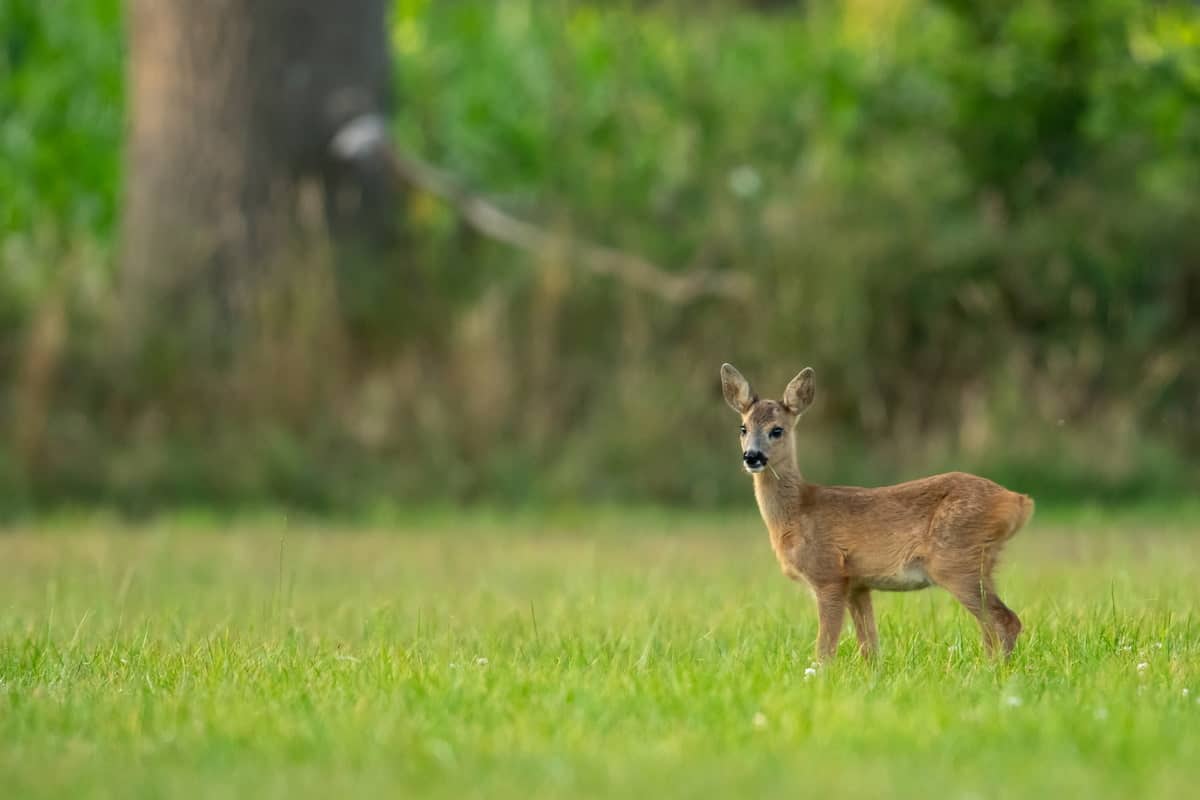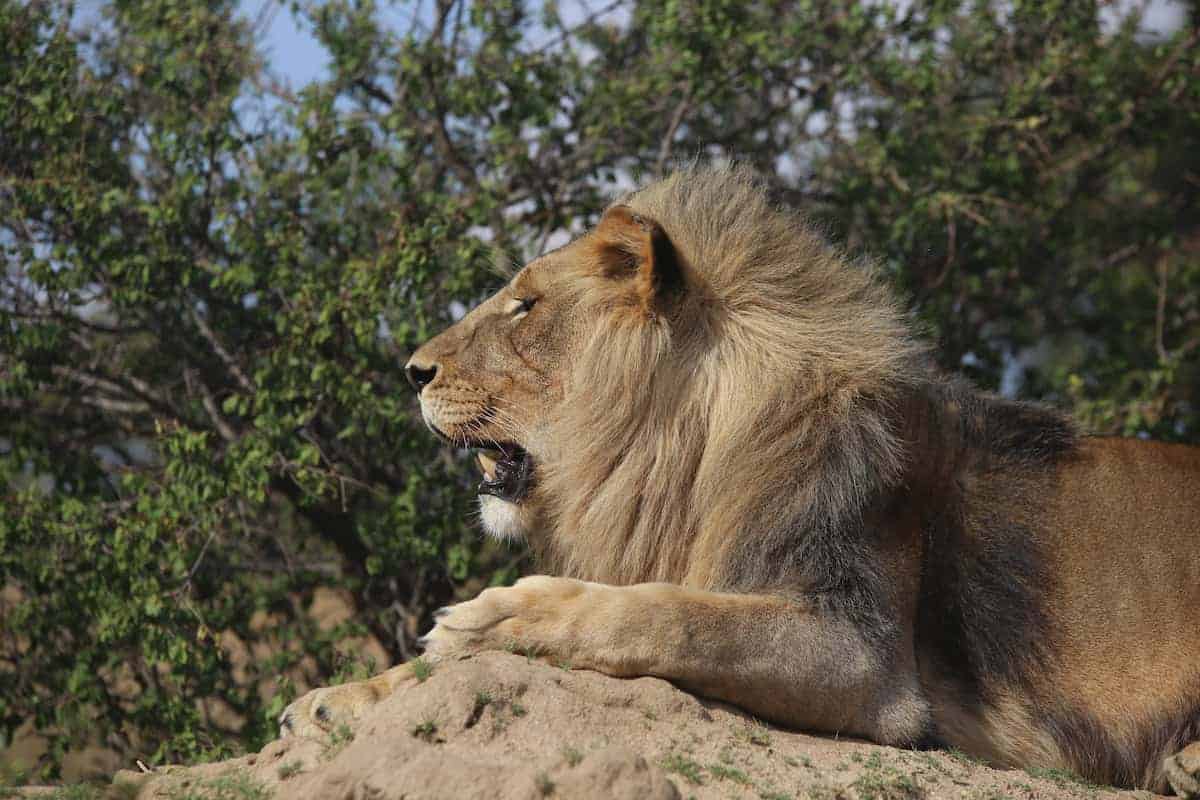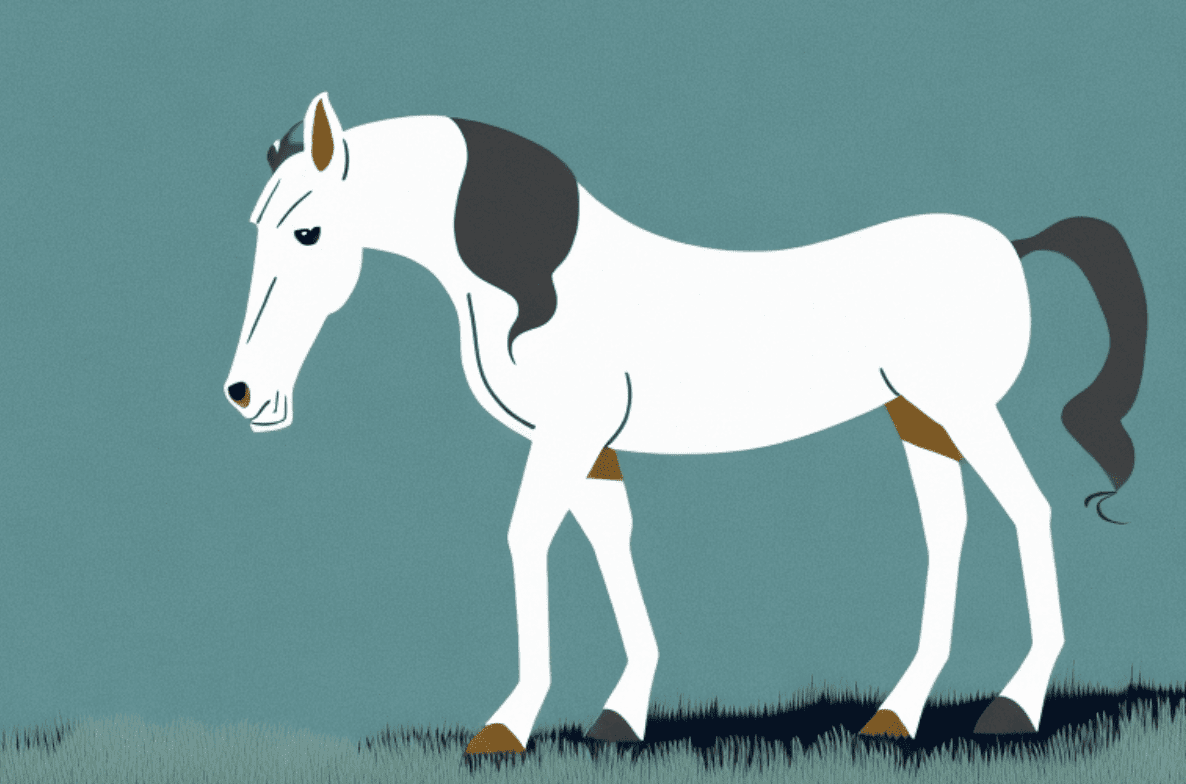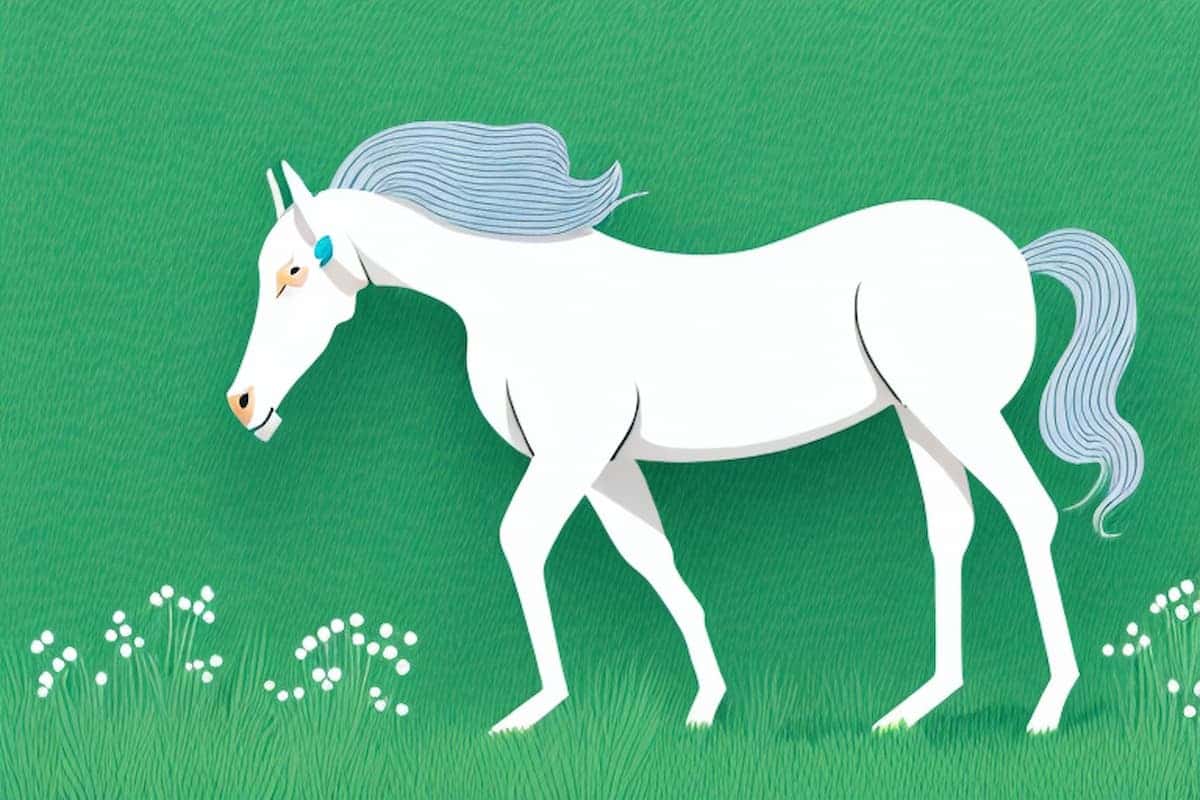Just like all animals, horses need to sleep. They need to get enough energy to run majestically through the fields, after all.
Horses are prey animals, and their instincts to remain alert don’t go away even when they live in safe barns and paddocks in captivity. This means that their sleep patterns are a bit different from how a human might sleep. Horses need to be ready to run at any sign of danger, so they don’t engage in long patterns of deep sleep the way natural predators (including humans) might.
However, horses still need to get rest, even though a good night’s sleep for a horse might look a little different than it does for you and me.
What Are the Two Sleeping Patterns Horses Have?
There are two major types of sleep that horses experience. Most of their sleep comes from light drowsing that they can engage in while standing up.
The other important sleep is REM sleep, which occurs when a horse is lying down.
Sleeping While Standing up
Like many prey animals, horses have the ability to sleep while standing up. They do this because it is easier to run away at any sign of danger. Horses are graceful animals except when they are trying to get up from the ground. While they get their long legs under them and lift their massive weight, a predator could already attack them.
This period of sleep does not last for very long. Horses will usually drowse for a few minutes at a time when standing up. They will then wake up, check their surroundings, and might go right back to drowsing.
There are a few signs that can help you identify whether your horse is sleeping while standing up. Sleeping horses often stand on only three legs, not four, so check if your horse is lifting one of its hooves (usually a back leg). The head will also be lowered to the ground and the ears and lip may be relaxed. Horses close their eyes while drowsing because their ears are sensitive enough to alert them to any danger.
The Stay Apparatus
The stay apparatus is the reason why horses and prey animals like them are able to sleep standing up. This term refers to a locking mechanism made up of tendons and ligaments that hold joints in place without requiring brain activity or physical exertion.
The stay apparatus allows a horse to lock its joints until it wakes up. This helps the horse stay upright without exerting itself. Without the stay apparatus, a horse would fall over the second it fell asleep.
The stay apparatus is so advanced that it allows a horse to balance itself on only three legs while sleeping, not all four. This allows horses to partially rest their bodies without leaving themselves vulnerable to attack from predators. Horses weigh a lot and this can put strain on their legs, even when divided among four legs.
REM Sleep
REM sleep is a period of deep sleep crucial to restoring brain function and properly rejuvenating the body. Many animals, including humans, need periods of REM sleep to function properly. Horses need REM sleep just like we do, but they need far less of it.
Horses only engage in REM sleep for about three hours within a 24-hour period, compared to humans who need much longer. They do not sleep continuously for three hours, but sleep in cycles, waking up after a period of sleep lasting about 20 minutes to check their surroundings.
Horses enter periods of deep sleep only when lying down, which is why they do not sleep for very long. It is dangerous for a prey animal to spend that much time in a position of vulnerability which will take a long time to escape. Lying down for too long is also dangerous for horses as their bulk can constrict blood flow to certain organs if compressed for too long.
How to Tell When a Horse Is in REM Sleep
Entering deep sleep is one of the only reasons why a prey animal such as a horse would lay down. If you see your horse on the ground with its eyes closed, chances are that it is snoozing away.
When horses are in REM sleep, they usually lay on their side with their legs stretched out. You may notice their legs moving or twitching. This is a sign that your horse is dreaming.
Horses only engage in REM sleep when they feel completely safe otherwise, they would be making themselves vulnerable because it is hard for them to get up from that position. You may notice your horse mostly dozing off in its paddock or box.
How Do Horses Sleep When in Groups?
When horses are in a group out in the field, you may notice them sleeping in shifts. A group of horses will lie down to sleep while one stays upright. The alert horse keeps an eye on its friends and wakes them up at the first sign of danger.
In the wild, herds of horses engage in this behavior to keep each other safe. Even domesticated horses feel safest when they know a fellow horse is looking after them while they sleep. That is why most horses will only fall into a deep sleep in the field if there is another horse present. Solitary horses will wait until they are in a confined environment such as a paddock.
Conclusion
Horses require two types of sleep to function properly—small naps and short periods of deep REM sleep. They get most of their sleep while standing up so that they can go into motion at the first sign of danger.
However, horses need about three hours of REM sleep a night, which they can only get while lying down. Sometimes, horses will sleep outside if they are in a large group, but usually, they only do so in their paddock, which is why horses in captivity need plenty of space to lie down.
